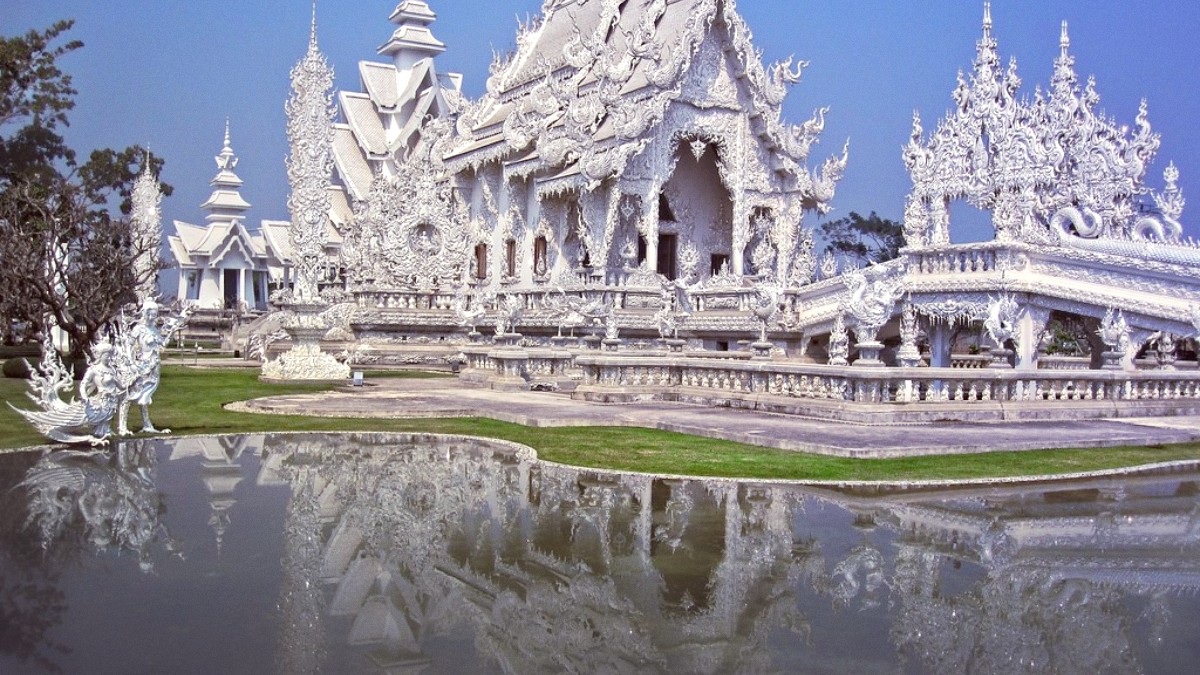
Chiang Rai Province, Thailand
Chiang Rai International Airport (CEI) is the main airport, approximately 10 kilometers northeast of the city center. Domestic flights connect Chiang Rai with major Thai cities like Bangkok (DMK & BKK), Phuket (HKT), Hat Yai (HDY), and Krabi (KBV). Airlines like Nok Air, Thai Lion Air, Thai AirAsia, Thai Airways, and Thai Vietjet Air operate these routes. International flights are limited, often seasonal, with most international travelers connecting via Bangkok.
CEI is a relatively small yet modern airport. Facilities include ATMs, currency exchange, duty-free, restaurants, car rental desks, and free Wi-Fi. Transfer options from CEI to the city center include airport taxis (fixed-price, THB 200-300), Grab ride-hailing (often more economical), hotel shuttles, and a local public bus service (THB 20) to Bus Terminal 1.
Increased flight prices due to higher demand (Nov-Feb).
More competitive pricing and common deals (Apr-Sep).
Air quality impacts travel plans (March-April).
Chiang Rai operates as a major bus hub. Bus Terminal 1 (city center) serves local routes. Bus Terminal 2 (south of city) handles long-distance routes. Frequent connections to Bangkok and Chiang Mai. Book tickets at terminals or online via 12Go.Asia.
Renting a car offers flexibility. An International Driving Permit (IDP) and national license are mandatory. Major international rental companies available. Road conditions vary; main roads are good, rural roads may be less so. Drive on the left.
Compare prices and book your car rental through DiscoverCars.com. Ensure comprehensive insurance coverage. Road safety standards in Thailand may differ from your home country. Drive defensively.
Chiang Rai is an inland city; sea travel is not applicable. River transportation plays a role for cross-border journeys and local tours. Chiang Rai province borders the Mekong River, a major transport route to Laos. Travelers often take a slow boat from Huay Xai (Laos), accessible via Chiang Khong. This multi-day journey down the Mekong to Luang Prabang is a popular way to connect these two destinations.
Prepare for your departure by understanding exit procedures and recommended timing. International departure taxes are typically included in your airline ticket price. You usually do not pay them separately at the airport.
CEI Airport: You will find check-in counters, security screening, a small selection of shops and restaurants post-security, and departure gates. Bus Terminals: Both bus terminals offer ticket counters, waiting areas, restrooms, and small shops for snacks and drinks.
Chiang Rai has no direct train service. The nearest train station is in Chiang Mai. Travelers arriving by train would take a train to Chiang Mai, then connect to Chiang Rai by bus or private car or minibus. The drive from Chiang Mai to Chiang Rai takes approximately 3-4 hours.
Chiang Rai’s public transportation system presents affordable ways to move within the city, though it lacks extensive metro or tram networks. Local Buses: A limited network of local buses operates from Chiang Rai Bus Terminal 1. These buses connect to areas within the city and nearby districts, standing as the cheapest option for specific routes.
Taxis and ride-sharing apps offer convenient alternatives, especially for longer distances or when a private ride is preferred. Traditional metered taxis are not common for street hailing. Most "taxis" are private cars operating via ride-sharing apps or hotel services. Grab is the dominant ride-hailing app, offering car services, motorcycle taxis, and food delivery. Grab is highly recommended for its convenience and fixed pricing. Download and set up the app before arrival.
Many guesthouses offer bicycles for rent (THB 50-100/day). Ideal for the city center.
Common and flexible. Prices usually THB 200-300/day for a scooter. Wear a helmet.
Offers flexibility. Valid IDP and national license are mandatory. Rates THB 800-1,500/day.
An International Driving Permit (IDP) and your national driving license are legally mandatory. Major international rental companies operate in Chiang Rai, alongside local Thai Rent A Car. Road conditions: Main roads between cities are generally well-maintained. Rural roads can be less so, potentially requiring more careful driving. Driving occurs on the left side of the road.
Chiang Rai’s compact city center makes walking and cycling enjoyable, especially during cooler months. The area around the Clock Tower, Night Bazaar, and several central temples is pleasant for walking. Streets are generally well-lit in the evenings. The Kok Riverfront offers scenic walking paths. Chiang Rai has limited dedicated bicycle lanes. Cyclists share the road with vehicles.
Chiang Rai lacks a formal hop-on-hop-off bus service. Many local tour operators present organized day tours to popular attractions using minivans or larger tour buses.
Longtail boats are available for hire from the pier near the city center. These boats offer trips up the Kok River to visit hill tribe villages or scenic spots. Prices vary by negotiation.
Accessibility services remain very limited. Most public transportation, sidewalks, and attractions are not designed for wheelchair access. A private car with a driver presents the most flexible option for those with mobility needs.
For Songthaews, hail them from the side of the road. If the truck is going your way, hop on. Ring the bell inside the back when you want to get off. Carry small bills and coins for songthaews and local buses for eased transactions.